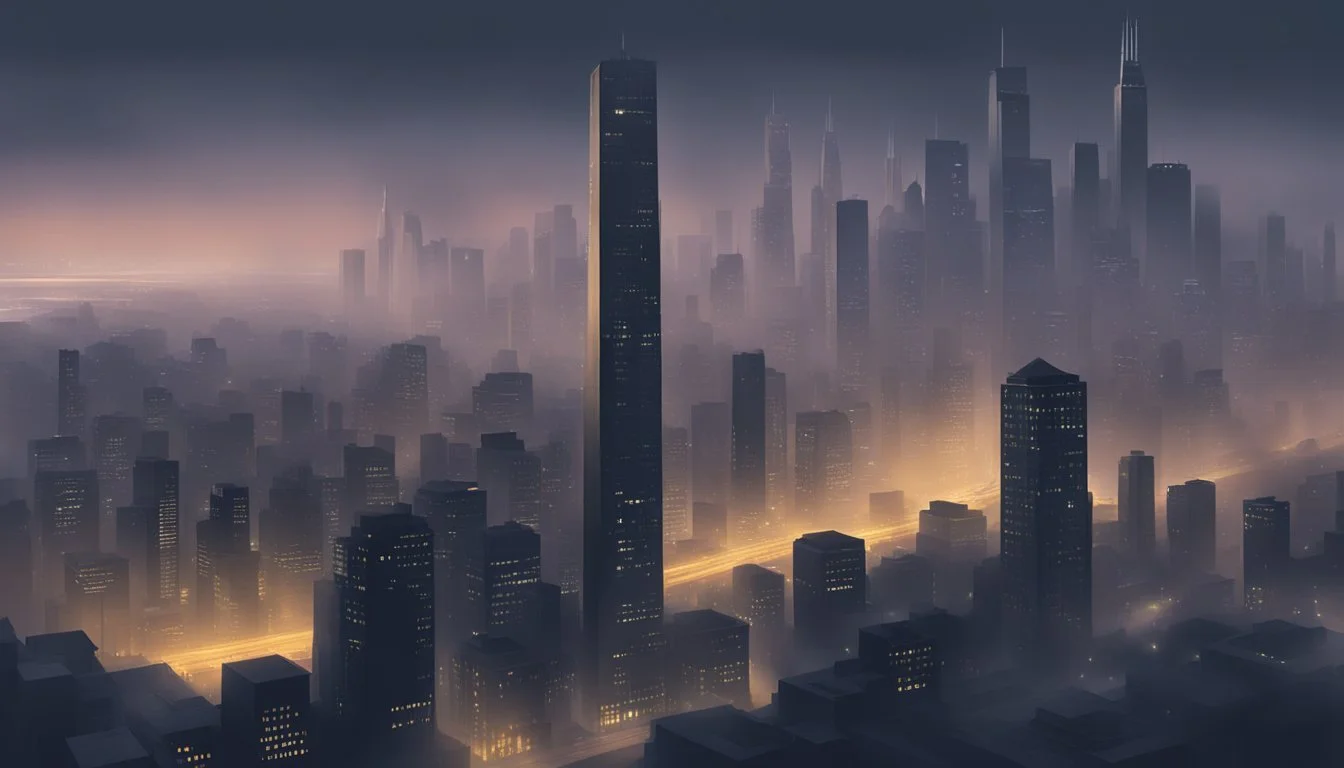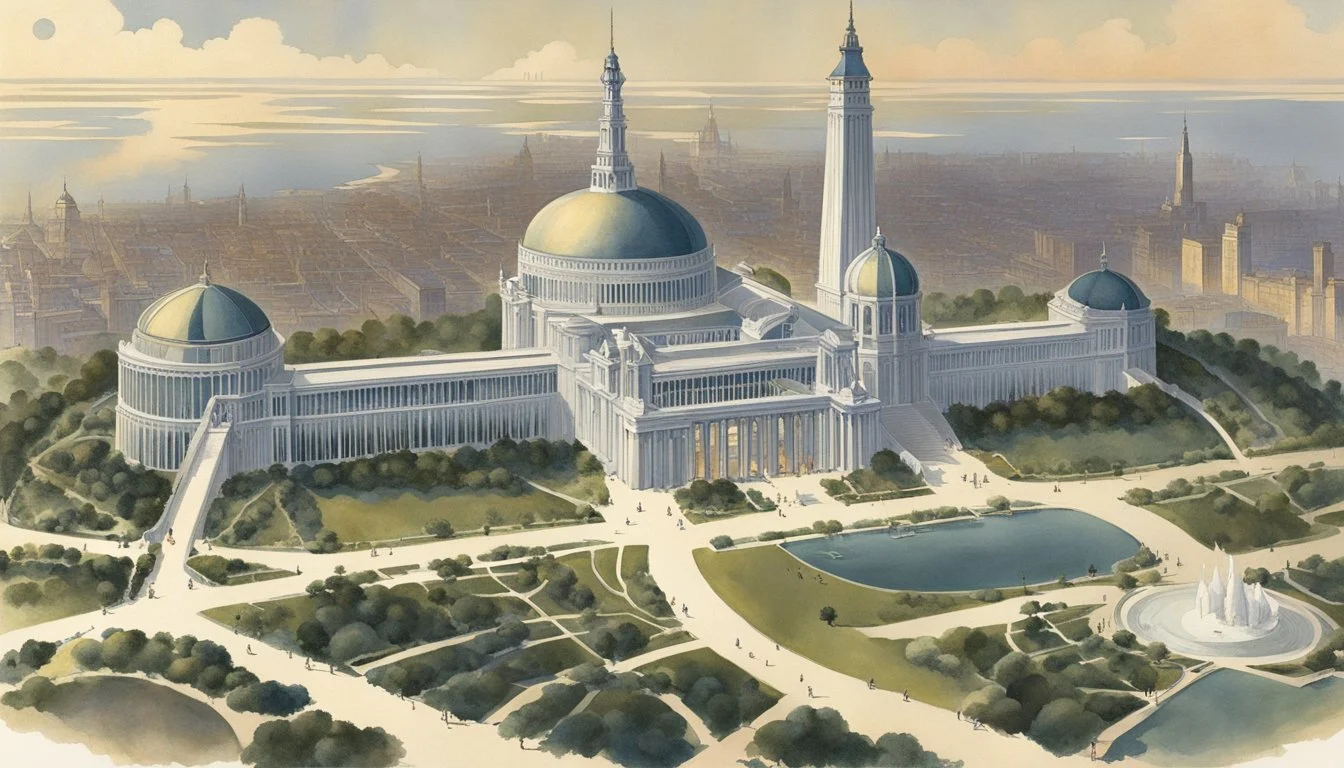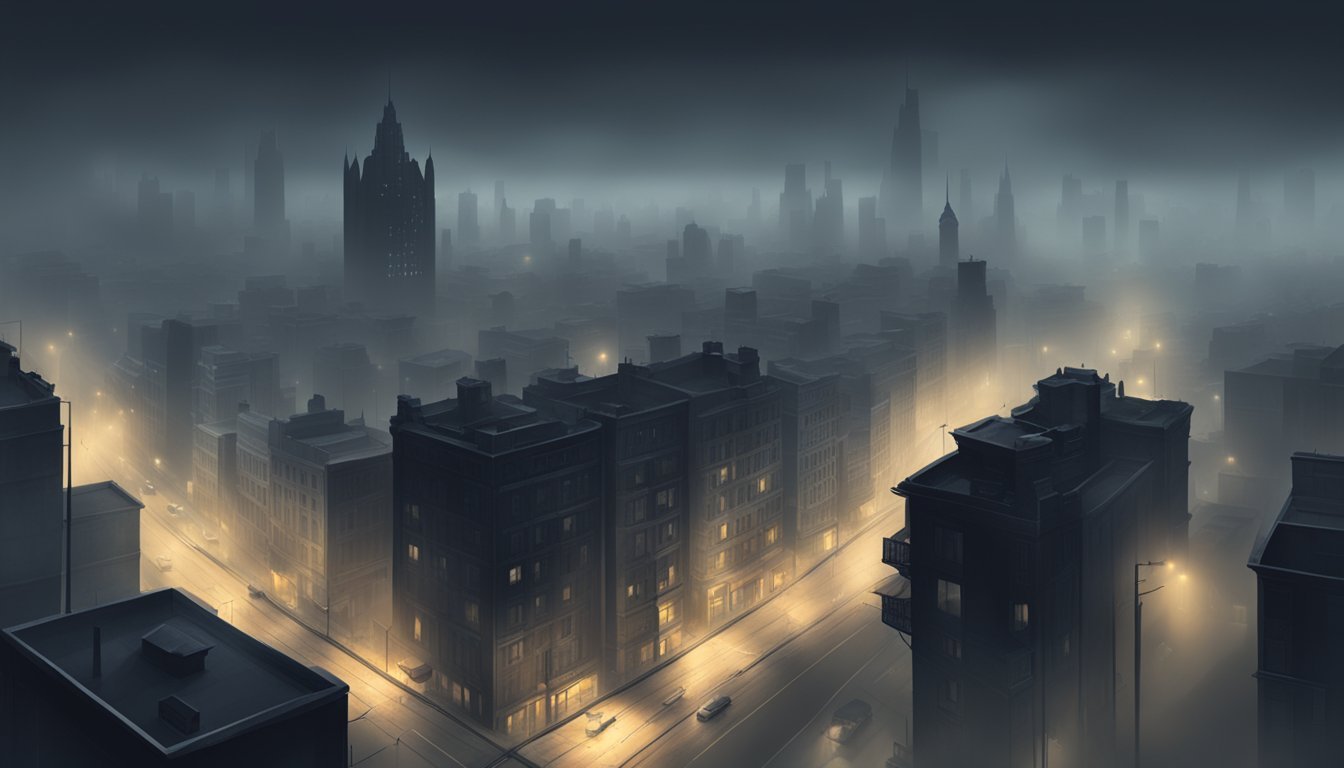The Devil in the White City by Erik Larson: A Gripping Tale of Murder and Innovation in 1893 Chicago
Erik Larson's "The Devil in the White City" intertwines two captivating stories set against the backdrop of the 1893 Chicago World's Fair. The book follows Daniel H. Burnham, the visionary architect behind the fair's magnificent construction, and H.H. Holmes, a charming serial killer who used the event as his hunting ground.
Larson's masterful storytelling brings the Gilded Age to life, blending meticulous historical research with gripping narrative. The author paints a vivid picture of late 19th-century Chicago, showcasing its rapid growth, technological advancements, and societal changes. Readers are transported to a time of innovation and wonder, while also exploring the darker undercurrents of the era.
The book's dual narrative structure keeps readers engaged, alternating between Burnham's ambitious efforts to create a world-class exposition and Holmes' sinister activities. This contrast between light and dark, progress and depravity, creates a compelling tension that propels the story forward. Larson's work has garnered critical acclaim, winning an Edgar Award and being named a National Book Award finalist.
Author Background
Erik Larson is a renowned American journalist and nonfiction author known for his meticulously researched historical narratives. Born in 1954, Larson has built a successful career blending journalistic precision with storytelling flair.
Works by Erik Larson
Larson's bibliography includes several bestsellers. "The Devil in the White City" (2003) remains his most famous work, intertwining the stories of the 1893 Chicago World's Fair and serial killer H.H. Holmes. Other notable books include "Isaac's Storm" (1999), about the 1900 Galveston hurricane, and "In the Garden of Beasts" (2011), set in Nazi Germany.
"Dead Wake" (2015) explores the sinking of the Lusitania, while "The Splendid and the Vile" (2020) chronicles Winston Churchill's first year as prime minister. Larson's works have sold millions of copies worldwide and been translated into numerous languages.
Literary Style and Influences
Larson's writing style combines rigorous historical research with a novelist's narrative techniques. He often employs parallel storylines, weaving together seemingly unrelated events to create compelling narratives.
His approach draws inspiration from Truman Capote's "nonfiction novel" concept. Larson meticulously reconstructs historical scenes and dialogue based on primary sources, giving readers a vivid sense of time and place.
Larson's journalistic background influences his attention to detail and fact-checking. He spends years researching each book, diving deep into archives and conducting extensive interviews. This commitment to accuracy, combined with his storytelling skills, has earned him critical acclaim and a dedicated readership.
Historical Context
The 1893 Chicago World's Fair and the Gilded Age era provide crucial background for understanding "The Devil in the White City." These historical elements shaped the environment in which the book's events unfolded.
1893 Chicago World's Fair
The World's Columbian Exposition, held in Chicago in 1893, celebrated the 400th anniversary of Columbus's arrival in the Americas. It showcased technological advancements and cultural achievements from around the globe. The fair attracted millions of visitors and featured grand neoclassical architecture, earning it the nickname "White City."
Key attractions included:
The first Ferris Wheel
Electric lights illuminating the fairgrounds
Exhibits from 46 nations
The exposition had a lasting impact on American culture, influencing architecture, urban planning, and consumer products. It also put Chicago on the world stage as a major city, rivaling New York and European capitals.
Gilded Age America
The Gilded Age, spanning from the 1870s to the 1890s, was characterized by rapid economic growth and stark social contrasts. This period saw:
Industrialization and technological innovations
Rise of powerful corporations and wealthy industrialists
Increased urbanization and immigration
However, the era also brought:
Widespread poverty and poor working conditions
Political corruption and social inequality
Labor unrest and strikes
Chicago exemplified these contrasts, with its booming industries and opulent mansions existing alongside overcrowded tenements and dangerous factories. The city's rapid growth and diverse population made it a microcosm of Gilded Age America's opportunities and challenges.
Synopsis
Erik Larson's "The Devil in the White City" intertwines two gripping narratives set against the backdrop of the 1893 Chicago World's Fair. The book contrasts the grandeur of the event's architecture with the dark deeds of a serial killer operating nearby.
The World's Fair Design and Architecture
Daniel Burnham, the fair's lead architect, faced numerous challenges in creating the "White City." He and his team transformed a swampy area into a grand showcase of neoclassical buildings. The fair featured innovative attractions like the first Ferris wheel and introduced new products such as Juicy Fruit gum and Shredded Wheat.
Burnham's vision included wide boulevards, lagoons, and stunning white structures. The fair drew millions of visitors and showcased American ingenuity and progress. It left a lasting impact on urban planning and architecture in the United States.
H.H. Holmes: America's First Serial Killer
As the fair captivated the public, H.H. Holmes carried out his sinister activities nearby. He built a hotel known as the "Murder Castle," complete with secret rooms, gas lines, and a crematorium. Holmes lured young women to Chicago with promises of employment or romance.
He exploited the influx of visitors to the fair, selecting victims from among them. Holmes confessed to 27 murders, though some estimates place the number much higher. His crimes shocked the nation when discovered, earning him the moniker of America's first serial killer.
Central Themes
Erik Larson's "The Devil in the White City" explores several key themes through its intertwined narratives of ambition, innovation, and darkness in late 19th century Chicago. The book contrasts the city's rapid growth and technological progress with the sinister undercurrents lurking beneath its surface.
Innovation vs. Morbidity
The 1893 World's Columbian Exposition showcased cutting-edge technology and architectural marvels. Daniel Burnham's vision for the "White City" represented the pinnacle of human achievement and ingenuity.
In stark contrast, H.H. Holmes embodied the dark side of progress. His "Murder Castle" utilized modern conveniences to conceal his crimes. Gas lines meant for lighting became tools for asphyxiation. Soundproof rooms muffled victims' screams.
This juxtaposition highlights how advancements can be used for both creation and destruction. The fair's gleaming facades and Holmes' charming exterior masked very different realities.
Urbanization
Chicago's explosive growth forms a crucial backdrop to the story. The city's population nearly doubled between 1880 and 1890, reaching over 1 million.
This rapid urbanization created both opportunities and challenges. It allowed Holmes to operate undetected, as newcomers constantly arrived seeking work and lodging.
The fair itself was a testament to urban ambition. Burnham and his team transformed a swampy lakefront into a grand spectacle in just 27 months.
Yet the book also touches on urban problems like poor sanitation, crime, and social inequality. These issues persisted despite the city's outward progress.
American Dream
The World's Fair embodied the promise of the American Dream. It offered a vision of prosperity, technological advancement, and cultural refinement.
Many characters pursue their own versions of this dream. Burnham rises from humble beginnings to become a renowned architect. Holmes seeks wealth and power through nefarious means.
The fair's success story contrasts with the harsh realities faced by many workers and immigrants. Long hours, dangerous conditions, and exploitation were common.
Larson portrays an America of both boundless opportunity and stark inequality. The gleaming "White City" stood in sharp relief to Chicago's grimy industrial landscape.
Critical Reception
Erik Larson's "The Devil in the White City" garnered significant attention from critics and readers alike. The book's unique blend of history and crime storytelling resonated with many, though some found fault with certain aspects of its approach.
Initial Reviews
Critics praised Larson's vivid storytelling and meticulous research. The New York Times called it "a dynamic, enveloping book." Many reviewers highlighted Larson's skill in weaving together the parallel narratives of Daniel Burnham and H.H. Holmes.
Some critics noted the book's cinematic quality. The Washington Post described it as "so good it reads like fiction." Larson's ability to bring historical figures to life received particular acclaim.
A few reviewers expressed concerns about the balance between the two storylines. Some felt the Holmes sections overshadowed the World's Fair narrative.
Long-Term Impact
"The Devil in the White City" has maintained its popularity since its 2003 release. It spent over three years on the New York Times bestseller list, demonstrating its enduring appeal.
The book's success sparked renewed interest in the 1893 World's Columbian Exposition. It inspired numerous adaptations, including a planned television series.
Larson's work influenced the true crime genre, popularizing the combination of historical narrative and criminal investigation. It has become a staple in book clubs and reading lists.
Academic reception has been mixed. Some historians praise its accessibility, while others critique its dramatized approach to historical events.
Adaptations
Erik Larson's "The Devil in the White City" has captured the imagination of readers and filmmakers alike. Its compelling blend of historical events and true crime has inspired various adaptation attempts across different media.
Film and Television
Leonardo DiCaprio acquired the film rights to "The Devil in the White City" in 2010. The actor planned to portray H.H. Holmes in a feature film directed by Martin Scorsese. However, the project evolved over time.
In 2019, Hulu announced plans to develop the book into a television series. The streaming platform partnered with DiCaprio and Scorsese as executive producers. Despite initial excitement, the series faced setbacks.
By 2022, Hulu had reportedly canceled the project. Keanu Reeves, who was set to star, exited the production. The adaptation's future remains uncertain, with no official announcements regarding its current status or potential new homes.
Literary Interpretations
"The Devil in the White City" has inspired other authors to explore similar themes and historical periods. Some writers have focused on the 1893 World's Fair, while others have delved into H.H. Holmes's crimes.
Several non-fiction books have examined Holmes's life and murders in greater detail. These works often cite Larson's book as a key source. Fiction authors have also drawn inspiration from the era, crafting novels set against the backdrop of the Chicago World's Fair.
Some literary works have reimagined the events of "The Devil in the White City" from different perspectives. These interpretations range from historical fiction to speculative alternate histories.
Real-life Figures
Erik Larson's "The Devil in the White City" intertwines the stories of several historical figures who played significant roles during the 1893 World's Columbian Exposition in Chicago. These individuals shaped the landscape of the fair and left lasting impacts on American history.
Daniel H. Burnham
Daniel H. Burnham was the lead architect and director of works for the World's Columbian Exposition. He faced immense challenges in designing and constructing the fairgrounds within a tight timeframe.
Burnham's vision transformed a swampy area of Jackson Park into the gleaming "White City." His team of architects created neoclassical buildings that inspired awe in visitors and influenced urban planning for decades to come.
Despite numerous setbacks, including financial difficulties and the assassination of Chicago's mayor, Burnham persevered. His leadership and determination were crucial in bringing the fair to fruition on schedule.
H.H. Holmes
H.H. Holmes, born Herman Webster Mudgett, was a notorious serial killer who operated in Chicago during the World's Fair. He constructed a three-story building later dubbed the "Murder Castle" near the fairgrounds.
Holmes lured victims, primarily young women, to his property with promises of employment or lodging. The building contained secret rooms, gas lines, and a crematorium in the basement for disposing of bodies.
Estimates of Holmes' victim count vary widely, with some sources claiming up to 200 murders. He was eventually caught, tried, and executed in 1896 for his crimes.
Other Notable Personalities
The World's Columbian Exposition attracted numerous prominent figures of the era. Buffalo Bill Cody set up his Wild West show just outside the fairgrounds, drawing large crowds.
Inventor Thomas Edison showcased his latest electrical innovations at the fair. Susan B. Anthony and other women's rights activists used the event as a platform to advocate for suffrage and equality.
Archduke Franz Ferdinand of Austria visited the exposition, years before his assassination would spark World War I. The fair also inspired young attendees like Walt Disney, whose later work would be influenced by the magical atmosphere of the White City.
Architectural Innovation
The 1893 World's Columbian Exposition in Chicago showcased groundbreaking architectural designs and construction techniques. Led by Daniel Burnham, the fair's buildings pushed the boundaries of scale, style, and engineering.
Construction Challenges
Building the White City posed immense challenges. The fairgrounds covered 600 acres of swampy land that required extensive drainage and foundation work. Burnham and his team had to construct over 200 buildings in just over two years.
The centerpiece Manufactures and Liberal Arts Building spanned 44 acres and stood 245 feet tall. Its steel-framed structure pioneered techniques later used in skyscrapers. Workers battled harsh Chicago weather to complete construction on schedule.
Innovative materials like staff - a mixture of plaster, cement, and jute fiber - allowed for quick assembly of ornate facades. This enabled the creation of grand classical-style buildings on a previously impossible scale and timeline.
Legacy of the Fair's Architecture
The World's Fair left an indelible mark on American architecture and urban planning. Its neoclassical "White City" aesthetic influenced civic buildings nationwide for decades. The City Beautiful movement emerged, emphasizing grand public spaces and monumental architecture.
Burnham's success managing the massive project elevated the role of architects as master planners. His "Plan of Chicago" became a model for urban development. The fair introduced millions to new architectural possibilities, from the world's first Ferris Wheel to Louis Sullivan's forward-looking Transportation Building.
While most structures were temporary, some buildings survived. The Palace of Fine Arts became the Museum of Science and Industry. The fair's landscape design by Frederick Law Olmsted inspired future urban parks across America.
Forensic and Criminal Investigation
Erik Larson's book delves into the forensic and investigative aspects of H.H. Holmes' crimes during the 1893 World's Fair era. The narrative explores the killer's methods and the limitations of contemporary police work.
Holmes' Methods
H.H. Holmes employed sophisticated techniques to carry out his murders and conceal evidence. He constructed a specially designed hotel, later dubbed the "Murder Castle," with secret rooms, airtight vaults, and hidden chutes.
Holmes used chloroform and gas to subdue victims. He often dissected bodies, stripping flesh from bone. Some remains were sold to medical schools.
The killer meticulously planned his crimes, maintaining detailed records of victims and financial transactions. This documentation later aided investigators in piecing together the extent of his activities.
Investigative Techniques of the Era
Law enforcement in the 1890s lacked many modern forensic tools. Fingerprinting was in its infancy, and DNA analysis didn't exist. Detectives relied heavily on eyewitness accounts and physical evidence.
Chicago police initially struggled to connect Holmes to disappearances. His charm and ability to manipulate records hindered early investigations.
The breakthrough came when detective Frank Geyer traced Holmes' movements across multiple states. Geyer's methodical approach, interviewing witnesses and examining hotel registers, proved crucial in uncovering the full scope of Holmes' crimes.
Handwriting analysis and rudimentary forensic accounting also played roles in building the case against Holmes. These techniques helped establish links between various aliases and financial transactions.





